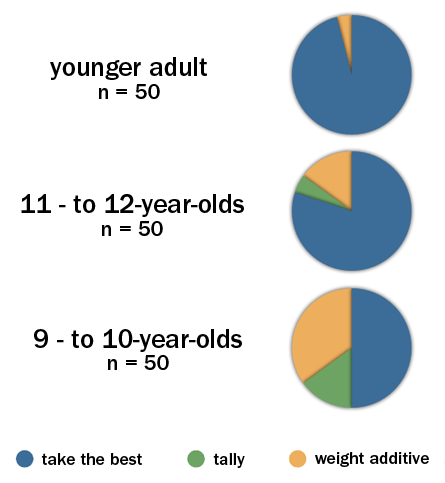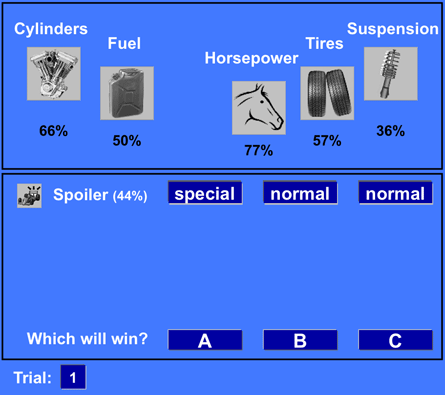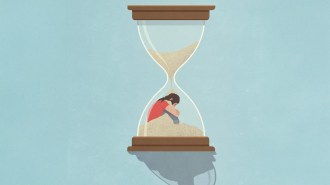Kids learn late to tackle data overload
Easy decision strategy not so simple for fourth graders
Fourth graders flock to information like middle schoolers to a Justin Bieber concert.


At ages 9 and 10, kids often make decisions by trying to integrate lots of previously learned material, when focusing on one particularly useful cue would work better, say psychologist Rui Mata of the University of Basel in Switzerland and his colleagues.
That’s a surprising tendency, given 9- and 10-year-olds’ limited ability to keep more than one piece of information in mind. But it’s consistent with the idea that complex mental and neural operations unavailable until late childhood underlie simple but powerful decision strategies used by most adults (SN: 7/5/08, p. 22).
“For younger children, easy decision strategies may come hard,” Mata says.
Many kids learn to home in on single, informative decision cues by age 12, Mata’s group reports in an upcoming Child Development.
Making a choice by relying on one especially good cue is deceptively complex because it requires ignoring much relevant material and attending to key bits of knowledge, Mata says. Consistent with his contention, brain areas crucial for selective attention mature substantially between ages 9 and 12.
Selective attention’s ascension in late childhood prompts problem-solving advances in many areas, including math (SN: 3/17/01, p. 172), remarks psychologist Robert Siegler of Carnegie Mellon University in Pittsburgh.
Mata’s team examined the ability of 50 fourth graders, 50 sixth graders and 50 young adults to predict which of three cars in a computer display would win a series of races based on six vehicle characteristics associated to varying degrees with speed. Volunteers received small amounts of money for each accurate prediction. By clicking on icons, the volunteers could see the predictive power — on a scale from one to seven — of as many or as few cues for each car as desired. Participants made predictions for 210 races and received feedback on performance after the first 30 races.
A mathematical model developed by University of Basel psychologist and study coauthor Jörg Rieskamp determined whether patterns of cue use and response speed for each person fit best with one of three strategies — using the most predictive available speed cue that distinguished one car from the others, adding up the predictive power values of speed cues for each car and then comparing totals, or tallying the number of top-ranked speed cues for each car without worrying about cue values.
In some races, certain vehicle cues (such as having high horsepower) predicted victory much better than others (say, using special fuel). In this condition, participants’ choices based on the best available cue were accurate nine out of 10 times, versus six out of 10 times for the other strategies.
Volunteers of all ages usually began by adding cue values or tallying top-ranked cues for each car. Nearly all young adults and more than three-quarters of 11- to 12-year-olds learned to focus on the best available cue by the final round of 30 races. In contrast, only half of 9- to 10-year-olds learned to do so.
In other races, speed cues differed modestly in predictive power, making cue adding and tallying more accurate than trying to select the best available cue. A majority of participants in all age groups opted for cue adding or tallying in this condition.







